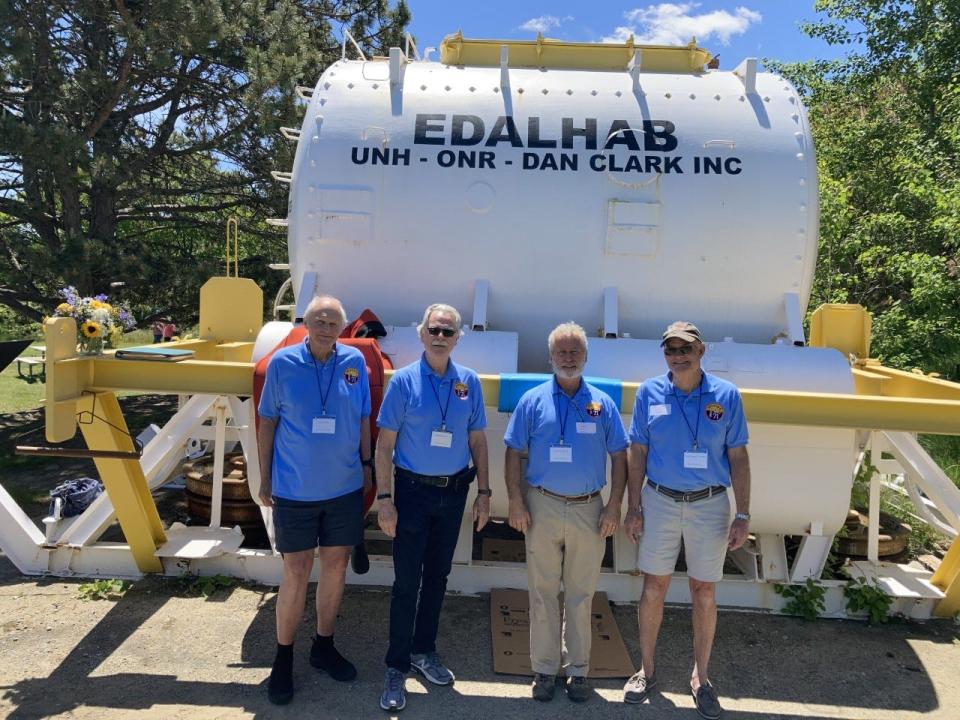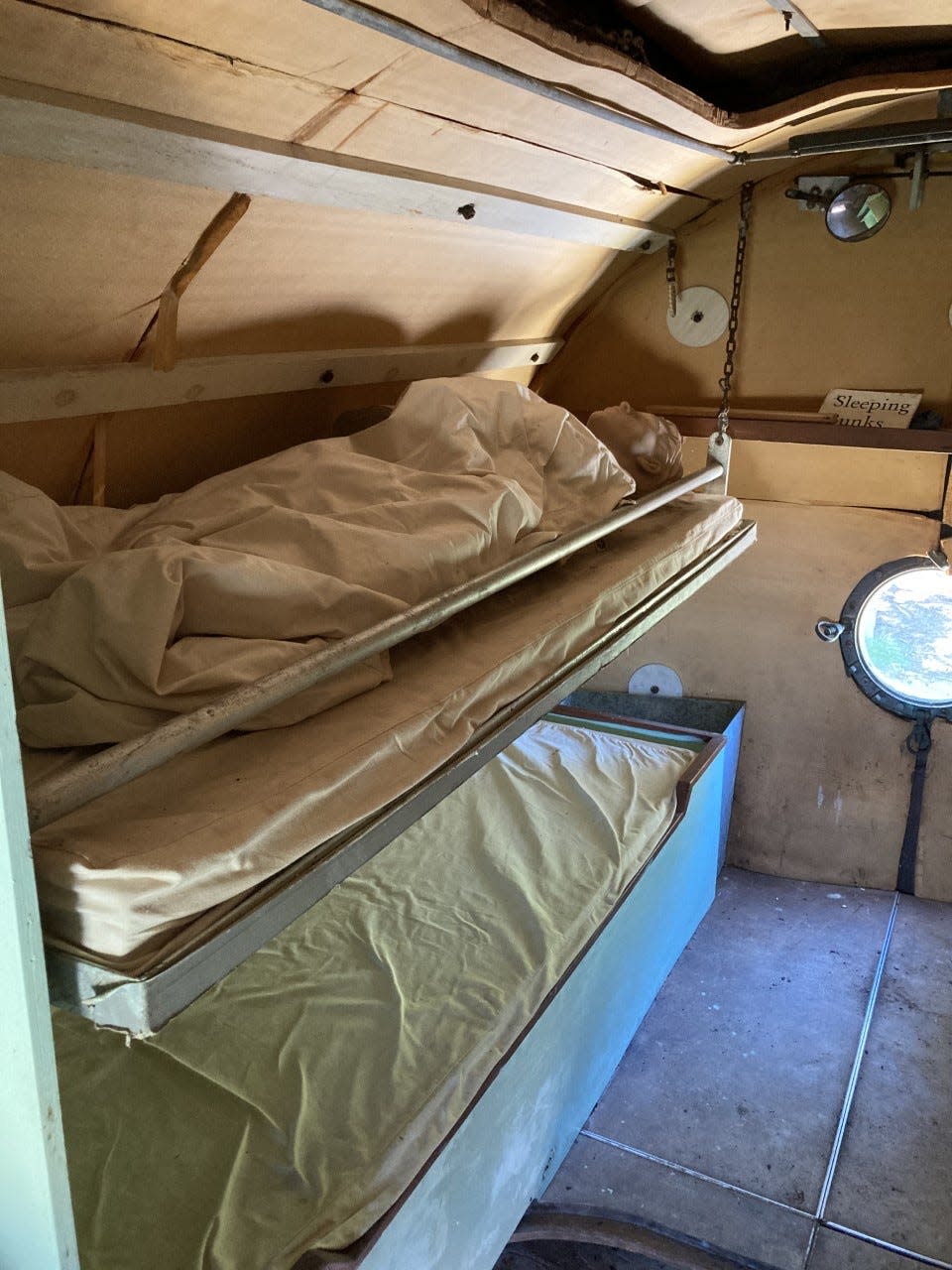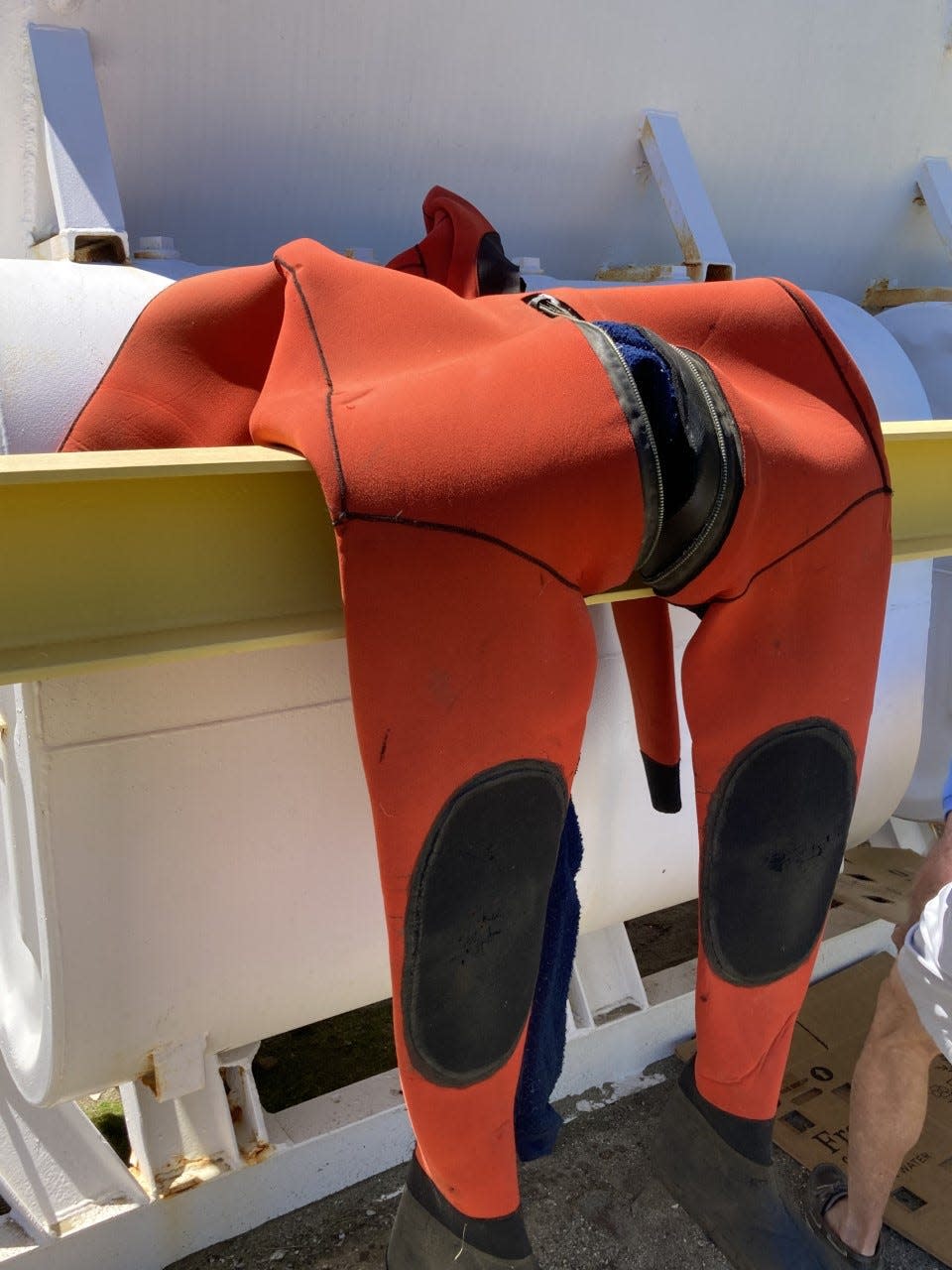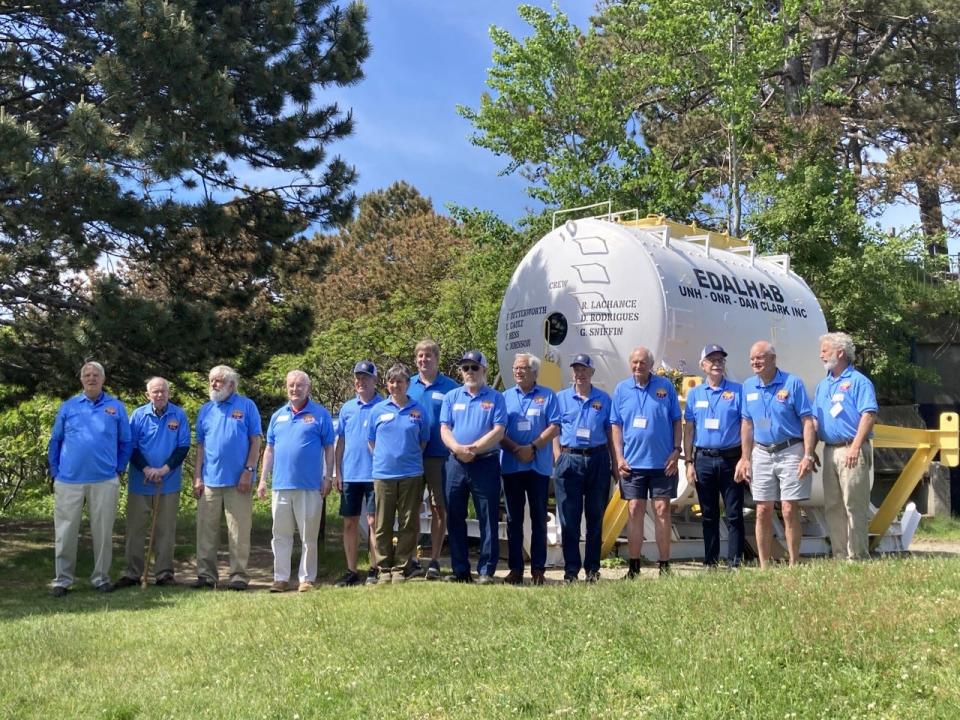How and why UNH scientists spent four days underwater in EDALHAB 50 years ago
RYE — It was 1971 when Larry Harris, a professor of zoology at the University of New Hampshire, was approached by Jeff Savage, a professor of mechanical and ocean engineering, to collaborate on a research project. His proposal was to introduce the Dungeness crab, a West Coast species, to the Gulf of Maine off the coast of the Isles of Shoals, to see how it would interact with native species like lobsters and wolffish.
This research however, acted as a justification for an even bigger endeavor: the launching of an underwater habitat called EDALHAB that would house three divers under saturation conditions over the course of four days.

New affordable apartments in Portsmouth: Here's a look inside and rent prices
EDALHAB, which stands for Engineering Design and Analysis Laboratory Habitat, had been constructed in 1968 by three UNH undergraduate engineering students who brought it up to Alton Bay, pressurized it, and submerged it in 20 feet of water. They lived in it successfully for three days. Savage wanted to take EDALHAB for a second mission, this time submerging it in 50 feet of water for bigger research purposes. Little did Savage and Harris know this expedition would make history.
Fifty years later, on June 5, 2022, the team stood proudly in front of EDALHAB on the lawn outside the Seacoast Science Center at Odiorne Point State Park in Rye, to celebrate the 50th anniversary of their expedition as part of World Ocean Day.
'Very cramped': What it was like in EDALHAB for UNH trio

Among the crowd were the three “aquanauts” who lived in EDALHAB for the duration of the four-day 1971 expedition. They were then zoology students Tom Glennon and Erick Sawtelle, and ocean engineering student Mark Hertel.
“It's very cramped space for three people in there. And we didn't sleep in there much,” Sawtelle said. “I think between the three of us we slept about an hour and a half for four days.”
This is in part because the divers would take turns every two hours going out for 20 minutes to observe the crabs. However, their lack of sleep was also due to the humid conditions.
Trouble in ocean: Red seaweed is taking over the Gulf of Maine. That’s bad news for cunner fish.
“It was 100% humidity in there. Stuff was dripping off the ceiling all the time, it was not dry at all.” Sawtelle said.
The original construction of the habitat in 1968 was in partnership with Woods Hole Oceanographic Institution. According to Sawtelle, it cost less than $10,000 to build EDALHAB, as many of the parts were used. The tank itself was made from an old pickle barrel.
“Now, you can use robotics and unmanned underwater vehicles, to do the same thing,” Sawtelle said.
Seacoast news: Download the Seacoastonline mobile app and the Fosters.com mobile app to stay connected
EDALAB got support from 'Lulu'

Hertel, in addition to his role as a saturation diver, built the yellow super structure that surrounded the habitat. This is what attached EDALHAB to “Lulu,” the vessel provided by Woods Hole that acted as a “mothership” to the habitat. The crew aboard Lulu consisted of support divers who went down to check on the aquanauts, chefs who sent down food in pressure cookers for the divers, and others who made sure the operation ran smoothly.
“We had to engineer how strong [the superstructure] had to be to lift (EDALHAB) up out of the water,” said Hertel. This was important because at the end of the four days, the aquanauts would need to be brought aboard Lulu, to undergo decompression.
Decorator crabs: The amazing spider crustaceans found in Hampton Beach tidepools
Since the divers were under saturated conditions, which is any depth below 30 feet, they were placed in a decompression chamber to avoid what Harris referred to as the “coke bottle” effect.
He explained that below 30 feet, the air pressure doubles.
“As you're breathing the gases in your tank, at the pressure that surrounds you, the air going into your lungs is at that higher atmospheric pressure,” Harris said. “As the gas diffuses, it goes into your lungs, but then especially the nitrogen goes into your tissues.”
Decompression ensures that this nitrogen will not turn to gas and cause bubbles in the tissues and bloodstream which is dangerous, Harris said. The divers were required to spend 11 hours in the decompression chamber.
EDALHAB's legacy has lasting impact

The success of EDALHAB II led to a subsequent expedition in 1972, off the coast of Miami.
According to Glennon, it also paved the way for UNH’s Sea Grant Program, which provides money for various research projects.
“It was kind of a big deal,” said Glennon. “We were the genesis of that program, and today it still operates at UNH.”
In Portsmouth: Islamic Society of Dover looks to buy North Church's old parish house to establish mosque
The habitat is now retired, and currently housed at Seacoast Science Center for display. World Ocean Day attracted many intrigued visitors who got the chance to talk with the team including the three aquanauts, see EDALHAB, and even climb inside to get a glimpse of the divers’ experience.
Jeff Savage died in 2004, leaving behind the legacy of EDALHAB. But his son, Bill Savage, was in attendance. He was 7 years old when EDALHAB II took place and was always around the crew because of his curiosity about his dad’s involvement with the project.
“I always think of this as his crowning achievement,” Savage said. “He did so many other things, but this one, if he could have been here, I gotta tell you that smile on his face to see all these guys come back ... this is seriously extraordinary.”
This article originally appeared on Portsmouth Herald: EDALHAB 50 years later: How UNH scientists spent four days underwater

